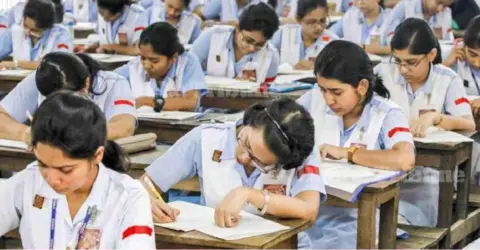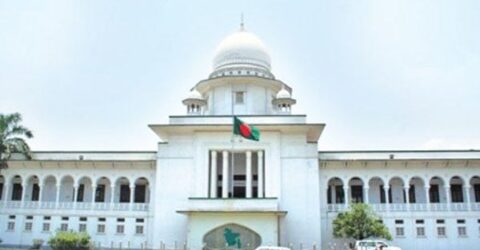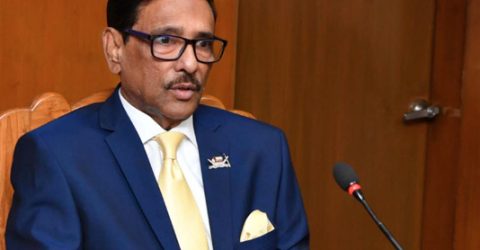Dhaka seeks Indian hydropower in exchange of transmission facility
The Bangladesh The Bangladesh
Today

DHAKA, – Dhaka has refloated an idea of getting a share of Indian hydropower letting the neighbour set up transmission lines from its northeastern Arunachal Pradesh to northwestern regions through Bangladesh, foreign minister Dr AK Abdul Momen said here today.
Talking to BSS Momen said during Indian Prime Minister Narendra Modi’s recent Bangladesh visit he proposed the idea for mutual benefit as Arunachal Pradesh and adjacent northeastern Indian regions were sources of huge quantum of untapped renewable energy.
“We expressed our interest and I told him (the Indian premier) that you now need to spend a huge amount of money to transmit hydro power from India’s northeastern to northwestern region while you can use our plain land to reduce the cost,” he said.
Modi, he said, India was planning to explore all hydropower potentials in Arunachal Pradesh and other northeastern states.
According to the foreign minister Modi also said India already consulted with different financial institutes including World Bank regarding prospects of the hydropower.
Momen said Bangladesh expected to get 20 to 25 percent of the hydropower to be transmitted through the high voltage gridline passing through its territory.
The foreign minister said that Bangladesh wanted to take a lead role in South Asia in connectivity front by setting up several power transmission corridors alongside optimising the use of its waterways through all 54 transboundary rivers with India.
Bangladesh currently imports around 1000 MW of power from Indian West Bengal’s Baharampur through Bheramara and 140MW from northeastern Indian state of Tripura through Akhaura.
The seventh meeting of Joint Steering Committee on India-Bangladesh cooperation in energy sector came up with a report in 2014 saying India could transmit power from Assam to its Northwestern regions using three routs including Bangladesh’s Boropukuria of Dinajpur or Jamalpur.
As per the report, the transmission line with the capacity of 6,000MW in Bangladesh land may be 100km in length if it is built in Boropukuria and 200km if is installed in Jamalpur while a substation would be built in each route.
Two possible routes of the transmission line are — from Asam’s Bonga through Baropukuria (Dinajpur) or Jamalpu to Bihar’s Punia and from Asam’s Shilchar via Meghna Ghat-Bheramara to West Bengal.
The report, however, did not mention about the third transmission corridor. Bangladesh’s Power Division officials said the country could benefit allowing the Indian transmission line through its territory also from the wheeling charge alongside buying 20-25 percent of the total power to be transmitted.
Momen said Bangladesh wanted to entirely phase out the use of fossil fuel as energy sources exploring renewable sources in view of its commitment to the climate change issue.
“We don’t have that many sources of renewable energy as wind power is not feasible here and solar panels are very expensive … so hydropower is the ultimate way of getting it,” he said.
Momen noted that the Biden administration rejoined the Paris Agreement and planned to make huge investment on technology transfer and investment to transfer the power sector to green energy. “When (US special presidential envoy for climate) John Kerry visited Dhaka earlier this month, we sought US investment and technology in the renewable energy sector here,” he said.
The foreign minister suggested that the US could invest in South Asian hydroelectric sector heavily under its climate change mitigation measures through a tripartite agreement with Bangladesh and India.
According to Indian North Eastern Electric Power Cooperation, the Indian North Eastern Region has the potential of about 58,971 MW power, almost 40 percent of India’s total hydropower potentials. At present, India has a total potential of 145,320 MW hydropower but only 45,399.22 MW of the quantum was being tapped.
Indian think tank Observer Research Foundation (ORF)in a study report last year said only 18 projects above the capacity of 25 MW were now under construction across Northeast in 2019.
This had prompted Dhaka to plan on setting up a massive transmission line that will be able to transmit around 20,000MW of electricity, said a foreign ministry official familiar with the issue.
Dhaka believes that there can be such high-capacity interconnectors in Tripura-Comilla, Bongaigaon (Assam)-Jamalpur/Dinajpur-Purnea (Bihar), Shilchar (Assam) and Fenchuganj, he said.
Bangladesh has been looking forward to massive electricity exchanges in the region involving India, Bhutan, Nepal and Myanmar since last decade.
Officials said Nepal and Bhutan have the potential to generate 30,000MW hydropower and thus Bangladesh has initiated joint investment projects among Bangladesh-India-Nepal and Bangladesh-India-Bhutan.




